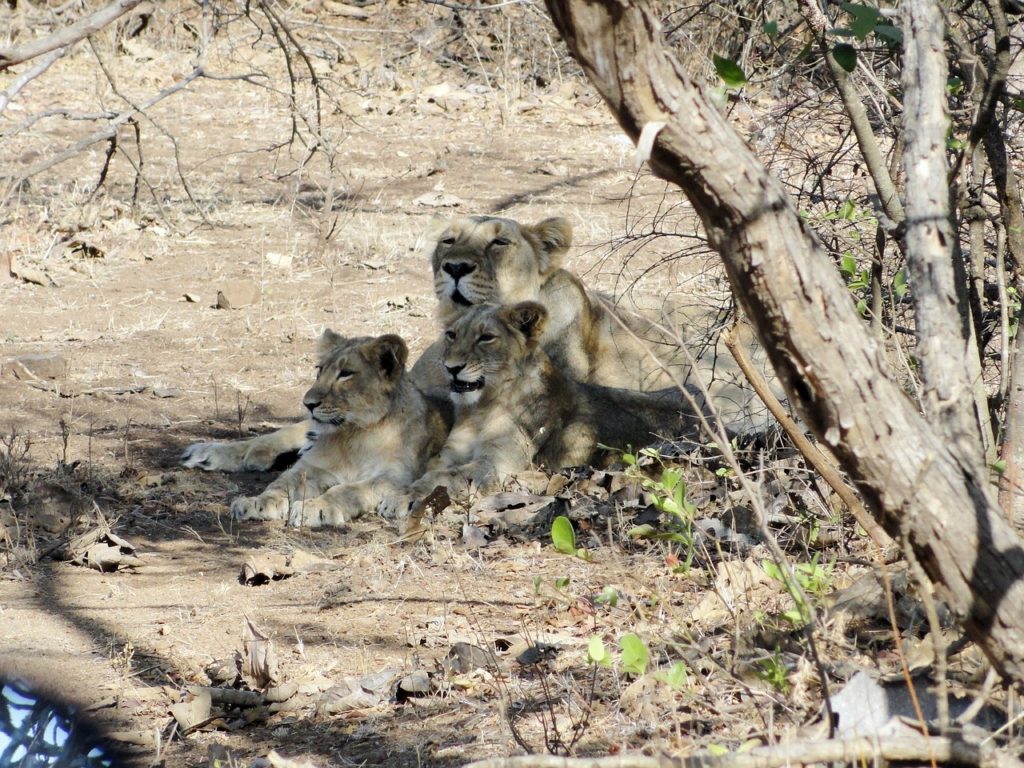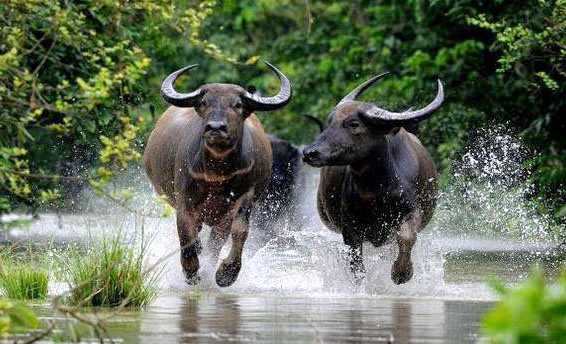We all have heard about Incredible India. Haven’t we? Ever wondered why we call India ‘Incredible’? There are many reasons that add up and make this country the most incredible in the world! And yes, the largest forest in India adds to her serenity and incredibility as well.
From our culturally rich states, and a variety of landforms, to a plethora of unique languages and irreplaceable heritage. One of the most important and essential factors is its forests! India is home to various types of forests and national parks which are full of breathtaking flora and fauna. These are the ‘Precious’ of our country and should be protected at all costs.
This article will introduce you to the largest forests in India as well as their location and uniqueness. However, before we proceed, let’s take a deeper dive to understand more about the largest forest in India, situated in Madhya Pradesh.
Table of Contents
Which is the largest forest in India?
With a total area of 77, 493 km2, Madhya Pradesh has the largest forest in India (area-wise). Here’s a breakdown of the largest forest cover in India, based on their area:
| State | Area of forest cover (in sq. km) |
|---|---|
| Madhya Pradesh | 77,493 |
| Arunachal Pradesh | 66,431 |
| Chhattisgarh | 55,717 |
| Odisha | 52,156 |
| Maharashtra | 50,978 |
Some interesting facts about the largest forest in India
Before we move on to the list of the forests in India, let’s take a look at some of the interesting facts pertaining to India’s forest cover:
- The Forest Survey Report 2021 reveals a growth of 2,261 square kilometres in the nation’s total forest and tree cover over the past two years.
- Madhya Pradesh boasts the largest forest cover in India by area.
- Andhra Pradesh saw the largest increase in forest cover (647 sq km), followed by Telangana (632 sq km) and Odisha (537 sq km).
- Over 33 percent of the geographical area in 17 states and Union Territories is covered by forests.
- The country’s forests hold an estimated 7,204 million tonnes of carbon stock, with an increase of 79.4 million tonnes.
- The total mangrove cover in India stands at 4,992 square kilometres, with a growth of 17 square kilometres observed.
A look at the 11 largest forests in India
While Madhya Pradesh has the largest forest cover in India (77,493 km2) when compared to the other states, India has an abundance of forest reserves and national parks that boast the natural beauty of our nation. Let’s take a look at some of them:
1. Hemis National Park, Jammu and Kashmir

Topping the list of the largest forests in India is the Hemis National Park. Situated in Ladakh, this national park is the largest one in India! Covering about 4,400 sq. km, home to the endangered snow leopards, Tibetan wolf, and Eurasian brown bear. Its fauna also includes birds like the golden eagle, the lammergeier vulture, and the Himalayan griffon vulture.
This park is located in the rain shadow region hence there is scarce rainfall. It has dry forests like Juniper and Populus-Salix.
The Ganda La mountain pass is situated in this park which attracts many trekkers and travelers making it a tourist hotspot.
2. Desert National Park, Rajasthan

Neighbouring the city of Jaisalmer, this desert is spread over an area of 3,162 sq. km and stands second in this list. Even though it is located in the desert region, it still has a lot of attractions that you won’t be able to see anywhere else.
Being the second of the largest forests in India, the highlight of this national park is the endangered Indian Bustard. Apart from that, we can also find desert reptiles like the spiny-tailed lizard, Russel’s viper and mammals including desert fox, wolf, hedgehog, etc.
Its flora includes Ronj, Palm trees, Ber, and Dhok. The desert national park offers a jeep safari for tourists to explore the Sam sand dunes and the large area of this park in a short span of time.
3. Simlipal National Park, Odisha

Apart from its beautiful beaches, temples and Olive Ridley turtles, Odisha is home to Simlipal National Park which covers over 2,750 sq. km in area. This park comes under the Simlipal Elephant Reserve which is an ecosystem with complete forest vegetation.
It has about 1076 species of mammals, 29 types of reptiles and 231 species of bird types. It has hot summers and chilly winters. It gets moderate to heavy rainfall which is the reason for its tropical moist deciduous forests. They include huge grasslands, beautiful orchids and also some aromatic and medicinal plants.
Its fauna includes tigers, leopards, elephants, sambar, Indian pied hornbill and many more.
4. Gangotri National Park, Uttarakhand

Gangotri Nationa Park comes fourth among the largest forests in India. Situated at high altitudes, this national park lies near Uttarkashi. It lavishly covers an area of about 2,390 sq. km. This park is named Gangotri because of the Gangotri glacier which drains to the holy Ganga river.
As it’s in a high-altitude region, it gets unbearably cold hence it remains closed for six months of winter.
Temperate dense coniferous forests are spread over the region, and trees like Pine, Fir, and Deodar are seen here. We get to see rare animals due to their unique ecosystem like snow leopards, black bears, blue sheep, brown bears, etc.
5. Namdapha National Park, Arunachal Pradesh

The northeastern part of our country is a paradise unexplored! Covering an area of 1,985 sq. km, Namdapha national park is filled with lowland evergreen forests. As the altitude increases, we find alpine forests and perennial snow.
The Namdapha is the only place in India that has four cat species like tiger, leopard, clouded leopard and snow leopard. With a varied altitude and perfect climate, Namdapha is a biodiversity hotspot. Its flora includes various species but the most famous are Sumatran’s pine and Delavay’s fir both are endangered species.
6. Khangchendzonga National Park, Sikkim

Khangchendzonga also known as Kanchenjunga National Park lies in the heart of the Himalayas. Khangchendzonga literally means ‘the abode of gods’, it really looks like it also. UNESCO has declared it a mixed-heritage site because it’s filled with both rich cultural spots and vast biodiversity.
Being one of the largest forests in India, Khangchendzonga national park has many rare animals like the snow leopard, red panda, blue sheep, and barking deer to name a few. It is also home to more than 500 species of avifauna. The flora includes temperate broadleaf forest, mixed coniferous forest, and alpine scrub.
7. Gir National Park, Gujarat

The den of India, the home to the very famous Asiatic lions in the Gir national park! According to the official website, it is the only place in the world where lions roam around freely after Africa. The Gir forest is spread over an area of about 1,412 sq. km and consists of dry deciduous forests. This makes it a perfect habitat for the Asiatic lions and other animals like leopards, antelopes, vultures, and pythons.
The best time to visit is in the winter as it will be chill but the time for photography is in the summer. If you are a solo traveller, then this is a must-visit place that should be on your travel bucket list.
8. Sundarbans National Park, West Bengal

Filled with marshy, moist and dense mangrove forests, the Sundarbans is not only the largest mangrove forest in India but also the largest delta in the world. This mangrove treasure is shared by both India and Bangladesh.
Sundarbans are home to the Royal Bengal Tiger and endangered species like estuarine crocodiles and river dolphins. The ideal time to visit here is from September to March.
9. Jim Corbett National Park, Uttarakhand

It may not be the largest in terms of area among the largest forests in India, but is the oldest and the most popular park in India! It was initially made to protect the Bengal Tiger and then became a popular wildlife sanctuary that shelters a wide range of flora and fauna.
Jim Corbett is spread over an area of 1,318 sq. km and offers a range of safaris in different zones, overall it is open all around the year and it is ideal to visit any time of the year.
10. Indravati National Park, Chattisgarh

Deriving its name from the Indravati River, the Indravati National Park covers an area of 1,258 sq. km. Just like every national park this one also has endangered animals like wild buffaloes and hill mynas.
Dominant flora includes Sal, teak, bamboo, India and many more. The optimal time to visit is from mid-December to mid-November.
11. Betla National Park, Jharkhand

Last but not least on the list of the largest forests in India is the Betla National Park. Situated over the hilly terrain of the Palamau district, Betla National Park is the last but not the least on this list. It covers an area of 1,026 sq. km. It is one of the earliest tiger reserves in the country. It is home to a wide variety of fauna like panthers, leopards, chital, sloths, and bears.
The Betla National Park is famous for its elephant rides and safaris, and the best time to visit this park is between November and March.
Frequently asked questions
1) Which is the largest forest in India?
The largest forest cover in India is found in the state of Madhya Pradesh with an area coverage of 77,493 km2.
2) Which is the largest and smallest forest in India?
As per the Forest Survey Report 2021, Madhya Pradesh has the largest forest in India with a geographical area cover of 77,493 km2 whereas Haryana has the smallest forest cover with just 3.63 percent of the total geographical area.
3) Which is the deepest forest in India?
Madhya Pradesh has the highest forest cover in India, whereas the Kanha National Park, located in the Maikal range of the Satpuras, is considered to be the deepest.
4) Which is the second largest forest in India?
Arunachal Pradesh has the second largest forest cover in India with an area of 66,431 km2, after Madhya Pradesh.
5) Which state has highest forest area in India 2022?
As per the Forest Survey Report 2021, Madhya Pradesh has the highest forest area covered in India, with a total area of 77,493 km2.
6) Which is the largest mangrove forest in India?
The Sundarbans is the largest mangrove forest in India. It is situated in the delta region, created by the merging of the Ganges, Brahmaputra, and Meghna Rivers into the Bay of Bengal.
Written by Zainab Sariya (@zainabsariya)







Hi, I read your article and I like it. Please check in
Thank you so much!